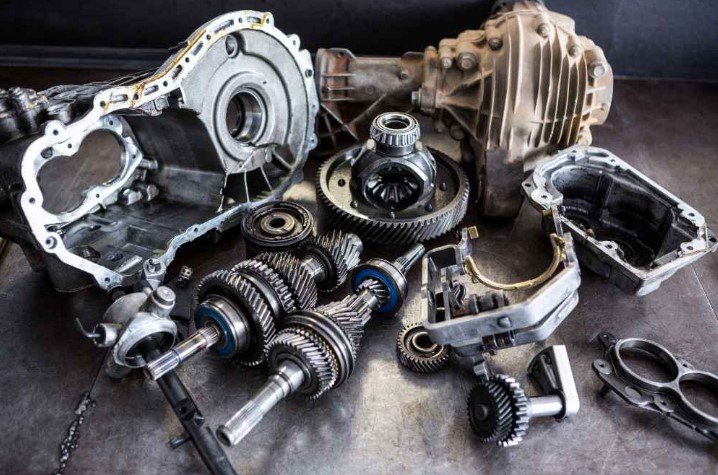The global aftermarket auto parts industry is a rapidly growing market, projected to reach USD 756.25 billion by 2032, growing at a 6.0% annual rate. However, the real opportunity lies in the e-commerce segment, which is expanding even faster. The e-commerce automotive aftermarket market is projected to grow from USD 110.25 billion in 2025 to USD 238.12 billion by 2030, with a remarkable annual growth rate of 16.65%. This growth clearly shows the immense potential for new business ventures in online auto parts sales. (Source: Coherent Market Insights, Modor Intelligence)
Global Increase in Vehicle Ownership
The global surge in vehicle ownership is a fundamental driver for the auto parts industry. In developed nations, car ownership has been steadily increasing. For instance, in 2023, the United States had approximately 850 vehicles per 1,000 people, while Japan reported 612 vehicles per 1,000 people. Germany and Australia also show high ownership rates, with 823 and 818 vehicles per 1,000 people, respectively.
In emerging markets, vehicle ownership is on the rise as well. China, for example, had 273 million vehicles in 2020, though the per capita ownership remains lower compared to developed countries. India and Brazil are experiencing rapid growth in vehicle numbers, driven by expanding middle-class populations and urbanization.
This global increase in vehicle ownership directly correlates with a higher demand for auto parts, servicing, and replacements. More vehicles on the road worldwide means a greater need for quality auto parts, providing a solid foundation for the growth of the auto parts business—particularly in the online sector.
Changes in Consumer Habits Post-COVID-19
The COVID-19 pandemic has significantly altered consumer behavior, accelerating the shift towards e-commerce. According to McKinsey, the pandemic compressed a decade’s worth of digital adoption into just 100 days, with 75% of U.S. consumers shifting to online shopping during lockdowns. By 2025, e-commerce as a percentage of total retail sales in the U.S. had risen to 16.2%, nearly matching the peak levels seen during the pandemic.
Social media usage also saw a significant increase during the pandemic. Data from We Are Social indicates that the global social media user total has increased by close to 30% since the start of the pandemic, equating to more than 1 billion new users over the past three years. This surge in digital engagement has provided businesses with new avenues to reach consumers and has been instrumental in the growth of online retail.
These shifts in consumer behavior have laid a strong foundation for the profitability of online auto parts businesses. The increased reliance on online shopping and digital platforms has created a conducive environment for the rapid expansion of e-commerce in the auto parts sector.
Supply Chain Trends in the Auto Parts Industry
The global auto parts supply chain has undergone significant transformations in recent years, particularly in key manufacturing hubs like China, Mexico, and Canada. China remains a dominant player, supplying a vast range of parts worldwide. The country’s shift towards “small orders and quick returns” has drastically lowered the entry barriers for online auto parts businesses, enabling them to operate with less inventory risk and a faster turnaround time.
Automation has also played a crucial role in enhancing supply chain efficiency. China has invested heavily in automation to streamline production and reduce costs, making the country an even more attractive supplier of auto parts. This trend is echoed in other manufacturing hubs like Mexico and Canada, where rising labor costs have prompted an increased reliance on automation to maintain competitiveness.
Moreover, the auto parts industry is increasingly shifting production to Southeast Asia, where labor costs are lower, and the adoption of automation is on the rise. This shift further reduces production costs, making it more feasible for online auto parts businesses to source affordable, high-quality components at scale.
These developments in the supply chain have contributed to a more efficient, cost-effective system, enhancing the scalability and profitability of sourcing auto parts from China.
Conclusion
The online auto parts business stands to benefit from increasing vehicle ownership, evolving consumer habits, and advancements in supply chain efficiency. With a growing demand for auto parts and a supportive digital environment, the online sector presents a lucrative opportunity for entrepreneurs and established businesses alike.
Data Sources
- McKinsey & Company, “Emerging Consumer Trends in a Post-COVID-19 World”
- We Are Social, “Digital in 2023”
- International Organization of Motor Vehicle Manufacturers (OICA), “Global Vehicle Ownership Trends”
- Nature, “China’s Vehicle Ownership Surge”
- United Nations Conference on Trade and Development (UNCTAD), “E-Commerce Growth Statistics”



